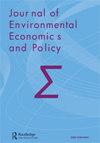林地使用对饮用水供应成本的影响:来自南非数据的机器学习证据
IF 1.2
Q3 ENVIRONMENTAL STUDIES
Journal of Environmental Economics and Policy
Pub Date : 2022-01-24
DOI:10.1080/21606544.2021.2024094
引用次数: 1
摘要
摘要水质改善是森林在供水系统集水区提供的关键生态系统服务之一。在这项研究中,我们将随机效应模型和机器学习的最小绝对收缩和选择回归方法应用于南非面板数据,以估计天然林覆盖对城市水处理成本的因果影响。我们控制了一系列混杂协变量,包括其他土地覆盖变量,包括湿地、人工林、草原、林地等。基于拉索的工具变量(IV)方法使我们能够同时考虑变量选择和内生性偏差的模型不确定性。我们发现了重要而有力的证据,表明天然林地覆盖在集约边际上降低了水处理成本。根据我们的首选模型估计,增加森林覆盖率的边际效益为10.63南非兰特/公顷/年。我们还发现,水处理成本对天然林面积的弹性响应为0.02%。与生产者从替代土地使用中获得的盈余相比,我们对净水服务边际价值的估计很小。然而,如果考虑到天然林提供的其他生态系统商品和服务,则可以保护天然林地的使用。本文章由计算机程序翻译,如有差异,请以英文原文为准。
The effect of forest land use on the cost of drinking water supply: machine learning evidence from South African data
ABSTRACT Water quality amelioration is one of the key ecosystem services provided by forests in the catchment areas of water supply systems. In this study, we applied random effect models and the least absolute shrinkage and selection regression method of machine learning to South African panel data to estimate the causal effect of natural forest cover on municipalities' water treatment cost. We controlled for a range of confounding covariates including other land cover variables including wetlands, plantation forests, grassland, woodland etc. The Lasso based instrumental variable (IV) method allowed us to simultaneously account for model uncertainty surrounding variable selection and endogeneity bias. We found significant and robust evidence that natural forestland cover reduces water treatment costs at the intensive margin. Estimates from our preferred models indicated that the marginal benefit of increasing forest cover is R310.63 /ha/year. We also found that the elasticity response of water treatment cost to natural forest area is 0.02%. Our estimate of the marginal value of the water purification service is small compared to the producer's surplus from alternative land uses. However, protection of natural forest land use might be defended if other ecosystem goods and services provided by natural forests are taken into account.
求助全文
通过发布文献求助,成功后即可免费获取论文全文。
去求助
来源期刊

Journal of Environmental Economics and Policy
ENVIRONMENTAL STUDIES-
CiteScore
4.70
自引率
7.70%
发文量
26
 求助内容:
求助内容: 应助结果提醒方式:
应助结果提醒方式:


